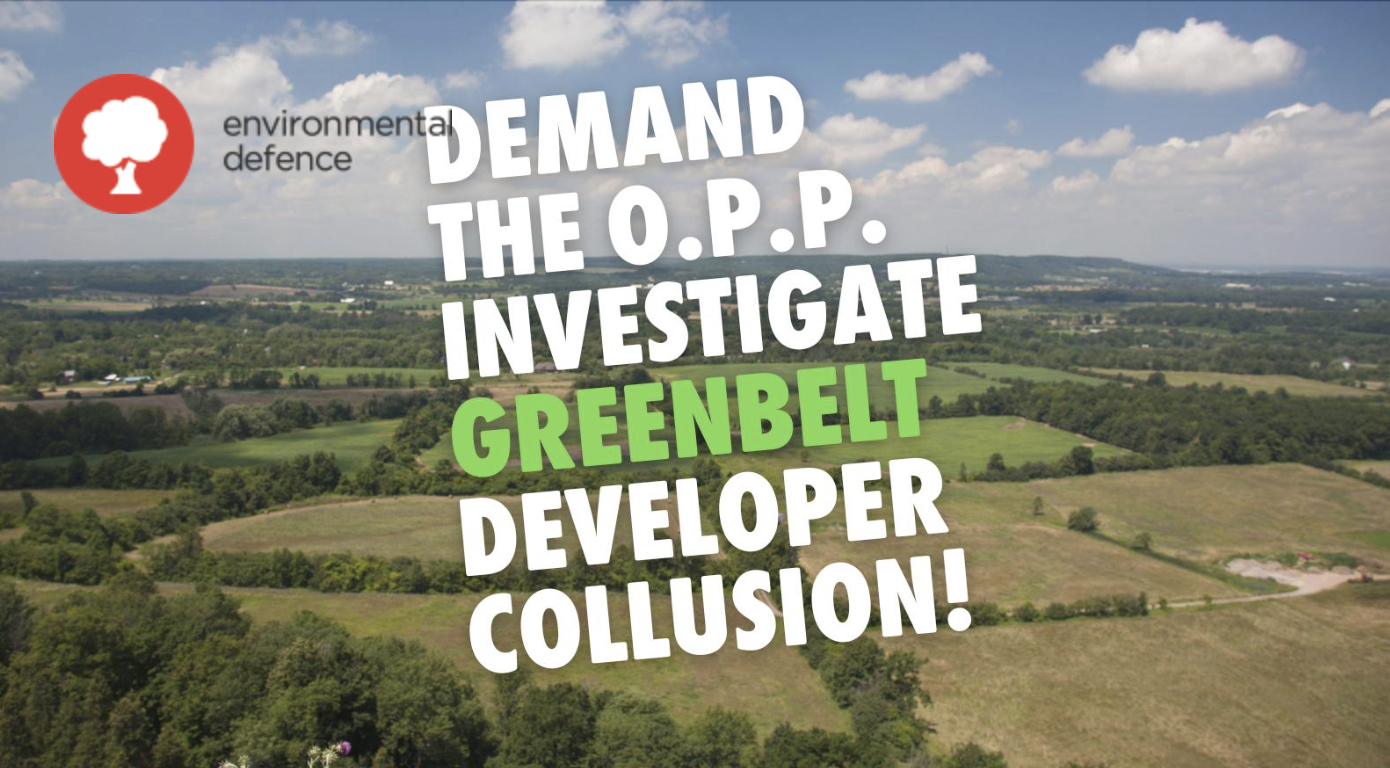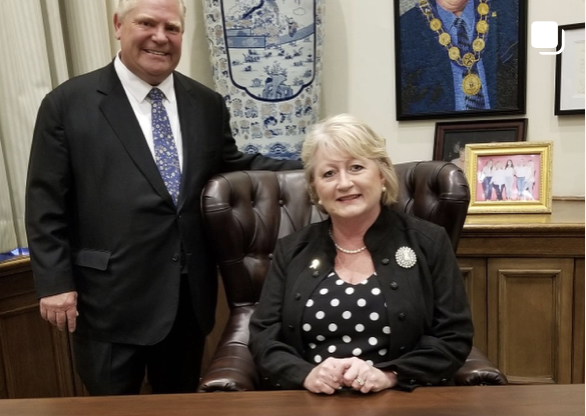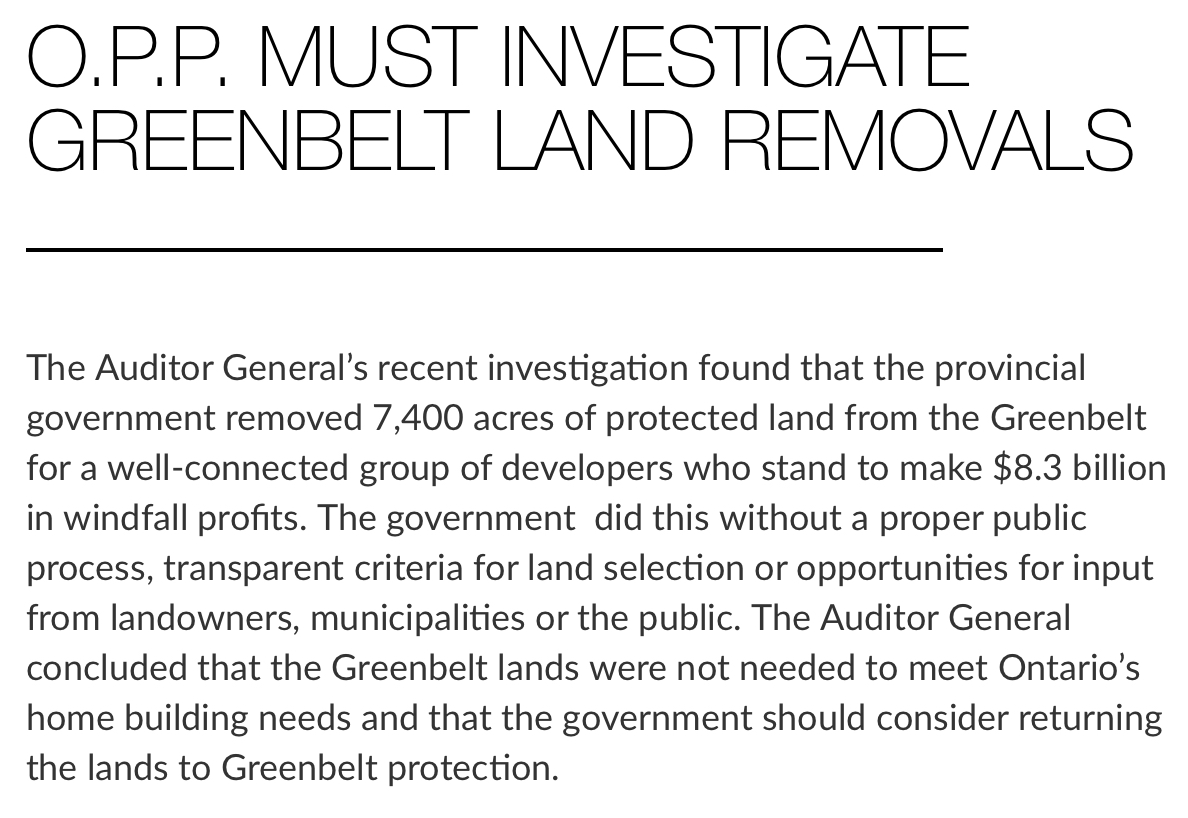

Doug Ford has made it very clear.
Even after the scathing report from the Auditor General he is not changing course on the key issue that really matters.
Ford insists the lands removed from the Greenbelt on 21 December 2022 are going to be developed.
MPPs have the power to stop this theft of prime agricultural land for more urban sprawl. 
I hope Newmarket-Aurora MPP, Dawn Gallagher Murphy, will do the right thing but her track record suggests she will cling like a limpet to Ford.
She was personally appointed by Ford as the local Progressive Conservative candidate. Party members had no say.
Backed Financially by Michael Rice
When she became the official PC candidate she was backed financially by Michael Rice, the developer who bought the Bathurst Greenbelt lands in King on 15 September 2022 and which are now to be opened-up for development. Rice doesn’t live in the riding. He gave her $2,000 and a further $1,087 to her Newmarket-Aurora Constituency Association.
But who is Dawn Gallagher Murphy?
Since her election on 2 June 2022 she has transformed herself from the former MPP’s Office Manager into a local celebrity, opening things, congratulating people and handing out grants and awards from the Province. She sees herself as FordNation’s ambassador in Newmarket and Aurora.
In her Community Newsletter from 2 December last year, the MPP explained why she was supporting the removal of lands from the Greenbelt. Click “Read more” below.
This email address is being protected from spambots. You need JavaScript enabled to view it.
Community Update Message on the Greenbelt from MPP Dawn Gallagher Murphy - 2 December 2022. (Text in box from Environmental Defence)
To the residents of Newmarket-Aurora, I would like to take this opportunity to respond to a few inquiries my constituency office has received regarding the Greenbelt. Last Month, the government launched a consultation on proposed changes to the Greenbelt.
We are taking further action to support our ambitious goal of building 1.5 million homes in the next decade by launching this consultation. These proposals will help build at least 50,000 new homes, while leading to an overall expansion of the Greenbelt of approximately 2,000 acres.
Our government is keeping its promise to consider every viable option to get more homes built faster so that Ontarians priced out of the housing market can realize their dream of homeownership. With the federal government’s recent announcement that it will raise immigration targets to approximately half a million newcomers each year, it is especially important that Ontario have the housing supply needed to welcome these newcomers and support existing residents.
Ontario is expected to grow by more than two million people by 2031, with approximately 1.5 million people living in the Greater Golden Horseshoe Region. To accommodate that growth and support the building of more homes, our government is proposing to remove 15 parcels of land totalling approximately 7,400 acres (approximately 2,995 hectares) from the edge of the Greenbelt area. NOTE: This proposed change affects 0.37 percent of the Greenbelt. Given their locations adjacent to existing settlements and transit, it makes sense to remove these lands.
We are also proposing to add an additional 9,400 acres to the Greenbelt, including a portion of the Paris Galt Moraine and 13 urban river valleys in the Greater Golden Horseshoe, for an overall Greenbelt expansion of approximately 2,000 acres.
Should these lands be removed from the Greenbelt, it is the government’s expectation that the landowners develop detailed plans to build housing quickly. Significant progress on approvals and implementation must be achieved by the end of 2023, with construction begun no later than 2025. If these conditions are not met, our government will return these properties to the Greenbelt. These proposals will support our municipal partners’ plan for responsible growth and help build housing faster and in a targeted manner, while leading to an overall expansion of the Greenbelt.
For the purposes of a collective understanding, the Greenbelt includes over 800,000 hectares of land in the Greater Golden Horseshoe, including farmland, forests, and wetlands, as well as homes and infrastructure. The legislation which created the protected space still allows for large infrastructure projects like highways and gravel mines to be built through its heart, and existing settlement areas are permitted to be developed. As such, infrastructure, including highways, water, and wastewater projects, is permitted where it supports the significant growth and economic development expected in southern Ontario.
To be clear, Ontario’s farmland is critical to the success of our agri-food sector, which is a key driver of the economy and supports hundreds of thousands of jobs. Under our government, crop production has remained consistent in Ontario and productivity continues to increase. Ontario’s agri-food sector continues to grow, increasing by over 5% in 2021, with the total value of farm cash receipts and the total value of capital on Ontario farms growing by about 40 percent since 2016.
Another item I would like to clarify relates to 'green standards amendments' in Bill 23, More Homes Built Faster (Ontario's Plan to Build More Homes Faster - Dawn Gallagher Murphy (dawngallaghermurphympp.ca). Municipalities have used site plan control as a mechanism to implement ‘Green Standards’ that can include enhanced energy efficiency requirements and sustainability features, as well as environmentally sustainable landscaping and bird friendly design.
Bill 23 was not intended to prevent municipalities from addressing these types of matters - but to prevent municipalities from using site plan to implement unnecessary visual design requirements, like mandating a certain type of brick exterior colour or finish. Often these requirements lead to increased costs and significant delays.
Through the legislative process, the government proposed changes to Bill 23 that would give municipalities the authority to apply green development standards through site plan control by referencing opt-in Building Code standards that we will be developing, if they pass by-laws to this effect. We recognize the important work being done by municipalities by providing them with a solid foundation for requiring green building standards in both site plan control and the Building Code.
While the Ontario Building Code already contains high standards for energy efficiency that apply across the province, the additional improvements for energy efficiency and other green measures to be developed for the next edition of Ontario’s Building Code will make Ontario a national leader in green building standards and provide a consistent approach for municipalities that choose to apply these requirements.
